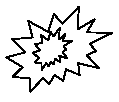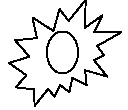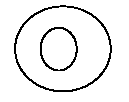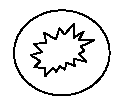Socionics Temperaments
In this paper, we show the evolution of views on the problem of Victor Gulenko temperaments. With his consent, we will not only publish his article "Guarantees productive learning" (written in 1992, in a revised form was included in his book, "Jung at school"), but also - right after this article - his letter to the editor "socionically newspapers ", which sets out its current thinking on the issue of temperament.
Author: Victor Gulenko .
Kiev socionics, author of the concept of "humanitarian socionics", the main method which he calls the "sociological analysis". Author of several articles and several books: "Young School" (with V.Tyschenko), "for the head of Socionics" (with A.Molodtsovym) and others.
Guarantees of productive training.
Temperamental and stimuli groups
Kyiv, 13.06.1992.
1 Classification of temperaments.
It is unlikely that there is at least one practitioner socionics, which would not be faced with the question of how to relate sotsiotipy with classical temperaments. Temperament manifested visibly and specifically - this is its advantage. Knowing such a correlation, it is much easier to explain behavioral responses sociotypes even untrained listener.
The question of temperament in science rather confused. There are many approaches to their classification, among them the best known humoral (Hippocrates, Galen), constitutional (Kretschmer, Sheldon), physiological (Pavlov), typological (Eysenck). Here are some of them.
According to the teachings of the Pavlov types of higher nervous activity temperaments described by means of three scales - 1) strength, 2) balance and 3) mobility of nervous processes. Classification itself is as follows:
- Choleric: strong unbalanced;
- Phlegmatic: strong, balanced, inert;
- Sanguine: strong, balanced, agile;
- Melancholic: weak.
For Socionics such classification is not necessary. Firstly, it does not logically complete: the three binary scales can build 2 = 8 types. Secondly, it is uneven: some temperaments are described by three characteristics, while others - two or even one. Sign of "strength-weakness" is asymmetrically distributed. Three temperament are strong and only one weak. It's like if in socion 12 types were logicians and only 4 of ethics.
Another approach is worthy of our attention - this is a test G.Ayzenka EPI, in which the four temperaments described by the two scales - 1) extra / introversion and 2) neuroticism (emotional stability). His classification is much more responsible socionics criteria - completeness and symmetry. Here it is:
- Choleric: extrovert, emotionally unstable;
- Phlegmatic introvert, emotionally stable;
- Sanguine: extroverted, emotionally stable;
- Melancholic introvert, emotionally unstable.
When comparing the two classifications is easy to see that one of the scales are practically the same - this balance by Pavlov and neuroticism in the Eysenck. For it is possible to find an analogue of sotsionicheskikh scales, though not Jung. However, as we shall see later, it is more convenient to stay within the Jungian. We will proceed, although we will use this scale to further characterize the sotsionicheskikh temperaments.
2 What are the scales to take?
To break socion four temperaments, only two of Young's scales. One scale already used Eysenck's extra / introversion. What do we get as a second?
Pavlovian strength-weakness cease to exist because of its asymmetry. Remains or neuroticism (poise), or the mobility of the nervous system. Strictly speaking, these two scales are suitable as they allow consistently describe four temperamental group sociotypes. But I still stayed on the scale of "mobility" because of Jung's scales, it has an obvious analogue.
Most criterion corresponds to the mobility of the nervous system sotsionicheskiy sign "irrationality." Irrational types easily switch from one activity to another, are more flexible in their behavior. Rational same types are inert nervous system - hard work in the regime of constant switching behavior is consistent and reliable.
And now look at how we have chosen the scale - the rational / irrational and extra / introversion - as a result of orthogonal crossing four groups sotsionicheskikh temperaments:
Rational Irrationals
Extrovert Choleric Sanguine
Introvert Phlegmatic Melancholy
Consequently, 16 sociotypes distributed by temperament as follows:
1) choleric, or rational extroverts - EHTUZIAST (ESE), HASTAVHIK (EIE), PREDPRIHIMATEL (LIE) and ADMIHISTRATOR (FEL);
2) phlegmatic, or rational introverts - AHALITIK (LII), IHSPEKTOR (LSI), HRAHITEL (ESI) and Mediator (EII);
3) sanguine, or irrational extroverts - INVENTOR (ILE), MARSHAL (SLE), Politics (SEE) and psychology (IEA);
4) melancholic, or irrational introverts - POSREDHIK (SEI), the lyrics (IEI), critics (OR) and MASTER (SSI).
3 Characterization of temperamental groups.
Characterize the group received. For greater clarity, I will also use an additional feature of temperamental "balance the nervous system."
1 Choleric - this sotsiotipy which differ both internal and external concern. This temperament is the most unstable when on the road choleric sociotypes there is a sudden obstacle, because extraversion he could not hold back excitement - it spills out. Circumvent the obstacle it is also difficult because of its rational straightness. Explosive choleric temperament is different and ADMIHISTRATOR nervous and restless PREDPRIHIMATEL and excited HASTAVHIK, and has a strong emotional pressure from EHTUZIAST.
2 Phlegmatic - it sotsiotipy that calm both externally and internally. This is the most balanced of all temperaments. Introverted rationality makes them discreet and private, without being distracted by external irritants. This does not mean that the phlegmatic is not able to fly out. Just to bring it up to such a state, it is necessary to spend a lot of effort. Strong-willed and delayed differ INSPECTOR CUSTODIAN, patience and complaisance AHALITIK and apologetic.
3 Sanguine - it sotsiotipy who are restless in appearance, but quiet inside. They can be described as a medium-balanced. Because of external activity, many take them for choleric, but it is not: after outbreaks of irritability they quickly calm down. Suffice it to switch to any other external stimulus, which they do because of the irrational extraversion. This same choleric until splash out accumulated irritation outside calms down. Without special effects fight and make peace policy and MARSHAL easily switch their attention with an annoying theme for a pleasant psychologist and inventor.
4 Melancholic - it sotsiotipy that calm outwardly, but inside are restless. They like sanguine occupy an intermediate value by the degree of balance of the nervous system, moving, however, closer to the pole of imbalance. Melancholic - introverts, so their inner feelings they hide under the guise of peace, or, conversely, liveliness. For this reason, they are easily confused with other temperaments. Problem of any melancholic - find inner peace, which is so easy to destroy the rude external factors. Melancholic depression suffer as a mediator and optimistic lyrics, and critics and pessimists MASTER. Their sensitive nervous system finely perceived imperfection of the world, generating suffering, and makes hiding either feigned optimism or pessimism over stressed.
Summing subtotal illustrate, for clarity, described temperaments particularly symbolic images that do not require special explanation:
Rational Irrationals Extrovert
Choleric
(speaker)
Sanguine
(statics)Introvert
Phlegmatic
(statics)
Melancholy
(speaker)
Attention! It would be useful to recall that real people mixed temperaments. On pure temperaments can speak only at the level of 16 picture is complicated at the level of 32: under our descriptions satisfactorily get only terminal options sociotypes [3].
Example. About half of the representatives of the social type MARSHAL living, moving, sociable people. This is a terminal option - sanguine under this type. The other half of the marshals - those relating to the initial subtype - outwardly calm, slow and phlegmatic. However, at the classical level 16, which I will explore in this article, this difference can not be detected.
4 Recommendations based on the temperaments.
Knowledge tipnye temperaments allows you to focus in such important issue as compliance sociotypes teacher behavioral reactions class. What do I mean?
In general, you have only three ways to establish normal and does not require excessive or unnecessary costs of mental and physical energy and interaction of the teacher study group:
1) forming classes for teachers
2) to select teachers for classes and
3) skomplektovat a class that could easily run a variety of teachers.
Since the first method in the current situation, most likely relates to the field of utopias, then analyze in detail only the second and third.
Selection of teachers to the class. I propose to distinguish four levels of discipline in the classroom, namely:
- First level: low discipline. Pupils are constantly talking to each other, engaged in foreign affairs, do not fulfill even the usual instructions of the teacher, and if you still come on for some time in the job, it is not able to concentrate on the subject deeply.
- Second level: amorphous discipline. Pupils little talking to each other, which makes the class is not so rapid, but do not fulfill the usual instructions of the teacher, and then diverted to his personal affairs, can not be more or less long period of time to concentrate on learning activities. Amorphicity - is the inability to hold gives shape.
- Third level: the average discipline. The disciples were talking to each other, but still committed to offering them a teacher, distracted by extraneous things a little work on the whole evenly.
- A fourth level: high discipline. During the lesson, students listen attentively to the teacher, outline the main provisions of the material being studied, were talking among themselves not to stably perform the tasks that the teacher gives them.
As the school experience, most of the classes in regular schools are on the first and second levels of discipline. If you come across a class with the third level of discipline that happens much less often, it is considered very good. Classes as the fourth level of discipline is almost there.
Practice sotsionicheskikh studies at school led me to a very definite conclusions as to whether in the classroom with what level of discipline is able to provide a satisfactory educational process or that sotsiotip teacher.
My REKOMEHDATSII are as follows:
1 In the class with high discipline is best taught with a phlegmatic temperament sotsiotipy (EII, ESI, LII, LSI).
2 In the class with an average discipline is best taught sotsiotipy with choleric temperament (ESE, EIE, FEL, LIE).
3. class in which discipline amorphous interact well sotsiotipy teachers with a melancholy temperament (EIS SLI, IEI, OR).
4. class in which discipline is low, can interact successfully as teachers only sotsiotipy teachers sanguine temperament (SEE, SLE, IEA, ILE).
To avoid misunderstanding, pay attention to the fact that we are talking about teaching, not about classroom management!
And now for the second innings sotsionicheskogo the educational process - how to build a class that could change different teachers without any violations of contact with him.
OSHOVHAYA REKOMEHDATSIYA for the implementation of this method: If you want to guarantee a stable training group a friendly working environment, ensure it balance (equal representation) of all four temperaments sotsionicheskikh!
To assess the man's belonging to a particular group of temperamental I developed a test containing 36 statements (in this publication is not given - Ed.).
5 Incentives to encourage activity.
In addition to accounting temperaments when recruiting and training groups at the expense of achieving a normal discipline and working environment in which no less importance is the second side of the learning process - the motivation to perform learning tasks. This requires knowledge of the incentives that drive types.
In the context of the problems under study can be understood as a two-way stimulus factor. Firstly, the activity encourages people to the very nature of the proposed work, which gives the possibility of self-actualization sotsiotip. Secondly, a man driven by the intended result of this work, if it is sufficiently attractive to him. In what follows, I will rely primarily on the first side of the complex concept of "stimulus." In socion can distinguish four groups of stimulus within which sotsiotipy motivated by a similar method. These groups are formed by the decomposition of socion four axes of the extra / introversion and sensing / intuition:
Extroverts Introverts
Sensory STATUS WELFARE
Intuit UNIQUE Self-worth
1 Touch extroverts.
Successfully realize their potential in the activities of a practical nature with an expanding range of contacts. Included in the work incentive STATUS: a prestigious position in the society, the successful promotion, power and influence, attention and respect. These sotsiotipy quantitatively predominant in most educational groups [2]. This is also evidenced by our practice sotsionicheskikh advice for parents and students. At least half of the heads of agencies, organizations and large enterprises fall into this group stimulus. The main thing is to pay attention to the teacher, working with them - it's to get away from theorizing and "book" knowledge, to make learning as close as possible to the social practice, it is very clear, with lots of examples and practical exercises, doing that the student would feel personal growth .
2 Touch introverts.
Successfully realize their potential in practical activities with a constant circle of contacts. Included in the work incentive BLAGOSOSTOYAHIYA: good material support, confidence in the future, order, and comfortable living and working conditions. These sotsiotipy by the number of their representatives in the average educational group usually are second - inferior touch extroverts, but prevail over intuitive types. They form a kind of foundation for the group to which the teacher and the need to direct the main effort in the classroom. Due to sensory introvert formed the so-called "middle class" (middle class) - the social foundation of any prosperous society. If they are good, then the whole society will develop steadily, without extremism. Teaching them, the teacher should pay particular attention to the direction of application of training, professionalism and quality of the transmitted knowledge and skills.
3 Intuitive extroverts.
Self-actualizing in non-traditional or constantly updated areas with expanding range of contacts. Included in the work incentive UHIKALHOSTI: unusual, long-term tasks, its complexity and intellectual fascination, far-reaching and large-scale effects of the proposed project, if implemented. These sotsiotipy quantitatively are in third place in the standard class, but worry sometimes delivered not less than extroverts touch his "non-standard", a desire to go beyond the usual. From their midst comes most intellectual leaders of his time - the pioneers, the founders of the new sciences (logic) or beliefs (ethics), instigators of the newly produced currents of social thought. The main thing for a teacher working with intuitive extroverts - not neutralize them, not to interfere with their quest, to give them an opportunity to express their theories and even arguing with the teacher.
4 Intuitive introverts.
Self-actualizing in non-traditional areas, or updated with a constant circle of contacts. Included in the work factor SAMOTSEHHOSTI, ie providing opportunities to do what is significant to them personally and in their preferred pace. The inner world of ideas - this is the most precious thing they have, and why they, in fact, only become wasting time. Therefore, its proposed tasks should be mandatory in some extent related to the interests of their views or methods of work. With all due respect to the intuitive extroverts need to recognize that the most profound ideas all are born in the head sociotypes this one, the smallest of any class of the stimulus group. Therefore, I recommend to teachers to allow them to safely engage in their favorite activity. Incentives prestige, power, wealth, and even priority and intellectual leadership they are not enough - they are almost always different personal modesty and unpretentiousness. Stimuli groups, so - is the foundation for the development of an individual approach to learning. Knowing the basic incentives, you can properly allocate effort in your teaching, psychological well-putting to students the tasks that they are understandable, manageable and fun.







 Reply With Quote
Reply With Quote